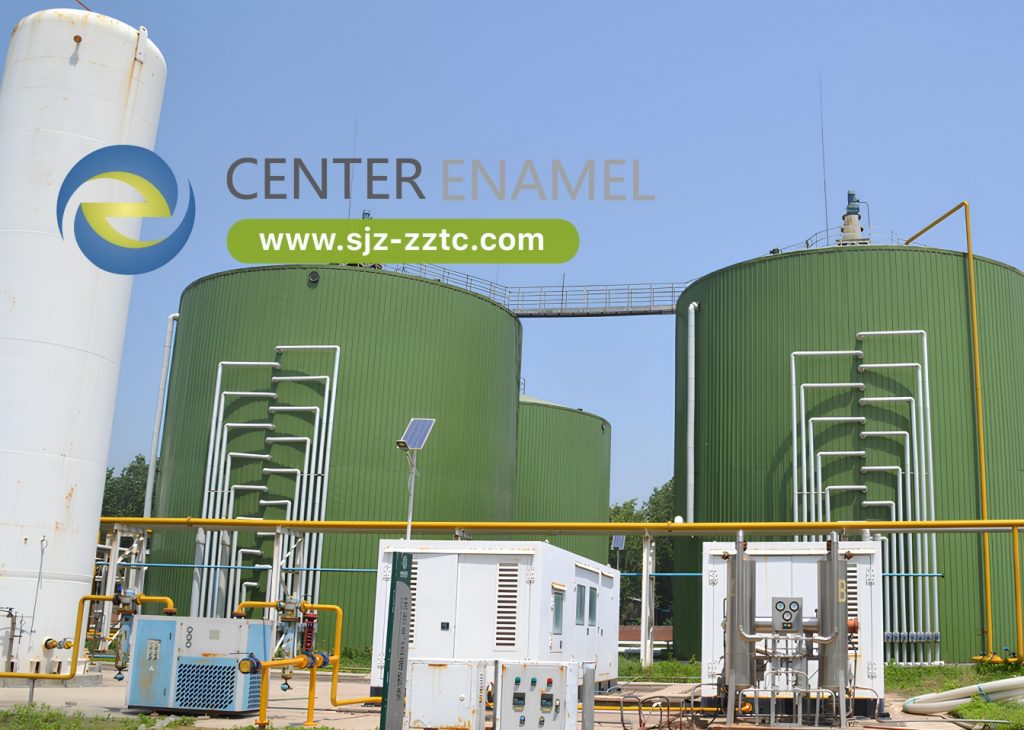Center Enamel Specialized in CSTR for Crop Residues and Straw Waste

In today’s agricultural landscape, effective management of crop residues and straw waste is essential for both environmental sustainability and energy production. Center Enamel has established itself as a leader in this field by specializing in the design and manufacture of Continuous Stirred Tank Reactors (CSTR) tailored specifically for the treatment of these challenging biomass streams. Our advanced CSTR systems are engineered to optimize the anaerobic digestion process, transforming agricultural waste into valuable biogas and nutrient-rich digestate.
Crop residues and straw waste are abundant by-products of modern agriculture. While these materials have significant potential as renewable energy sources, their high lignocellulosic content poses challenges for efficient degradation. Traditional anaerobic digestion systems often struggle with the slow breakdown of fibrous biomass, resulting in suboptimal biogas yields. Center Enamel’s CSTR technology addresses these challenges by providing a controlled, continuously mixed environment that enhances microbial activity and accelerates the decomposition process.
Advantages of CSTR for Agricultural Biomass
The Continuous Stirred Tank Reactor is an ideal solution for processing crop residues and straw waste due to its design and operational benefits:
- Enhanced Mixing and Uniformity
The CSTR design ensures constant agitation of the feedstock, promoting uniform distribution of microorganisms and maintaining consistent substrate contact. This continuous mixing is crucial for overcoming the heterogeneity of fibrous agricultural waste, thereby increasing the overall efficiency of the digestion process. - Optimized Retention Time
By providing a controlled environment, CSTRs allow for the precise management of hydraulic retention time. This optimization is particularly important for fibrous biomass, where prolonged contact between the microbes and substrate is necessary to achieve complete degradation. The result is a more stable process with improved biogas production rates. - Improved Process Stability
The robust design of Center Enamel’s CSTR systems incorporates advanced monitoring and control features. These systems maintain optimal temperature, pH, and mixing conditions, which are essential for supporting the microbial consortia responsible for breaking down complex carbohydrates. As a result, process stability is enhanced, and operational risks are minimized. - Scalability and Flexibility
Center Enamel’s CSTR solutions are available in a range of capacities to suit both small-scale farms and large commercial agricultural operations. Our reactors can be customized to accommodate varying volumes of crop residues and straw waste, ensuring that each system is perfectly aligned with the specific needs and operational goals of our clients.
Engineering Excellence and Customization
At Center Enamel, our engineering teams utilize advanced computational modeling and state-of-the-art manufacturing processes to design CSTR systems that deliver superior performance. Our reactors are constructed from high-quality, durable materials capable of withstanding the harsh conditions associated with processing lignocellulosic biomass. Key design features include:
- Optimized Impeller Systems: Designed to maximize mixing efficiency and minimize dead zones, ensuring that the biomass is uniformly processed.
- Robust Structural Design: Engineered for long-term durability and minimal maintenance, even under continuous operation.
- Integrated Monitoring: Advanced sensors and control systems provide real-time data on critical process parameters, enabling proactive adjustments and ensuring consistent reactor performance.
Furthermore, our design approach allows for the integration of pre-treatment modules where necessary. Mechanical, thermal, or chemical pre-treatment can be employed to enhance the biodegradability of crop residues and straw waste, further increasing the overall efficiency of biogas production.
Environmental and Economic Benefits
The adoption of specialized CSTR systems for crop residues and straw waste offers considerable environmental and economic advantages:
- Renewable Energy Production: By converting agricultural waste into biogas, farmers can reduce reliance on fossil fuels while generating a sustainable source of energy for on-site operations or grid supply.
- Reduction of Greenhouse Gas Emissions: Efficient anaerobic digestion minimizes methane emissions from decomposing crop residues, contributing to a lower overall carbon footprint.
- Nutrient Recovery: The digestate produced during the process is a valuable by-product that can be used as an organic fertilizer, reducing the need for chemical inputs and promoting sustainable soil management.
- Cost Efficiency: Enhanced process stability and optimized biogas yield contribute to lower operational costs and a favorable return on investment over the system’s lifecycle.
Center Enamel’s specialized CSTR systems represent a significant advancement in the treatment of crop residues and straw waste. By combining engineering excellence with a deep understanding of agricultural biomass characteristics, our reactors deliver efficient, scalable, and reliable solutions for renewable energy production. Our commitment to innovation ensures that our clients receive systems that not only meet but exceed industry standards for performance and sustainability.
For more information on how Center Enamel’s CSTR solutions can enhance the processing of crop residues and straw waste, and contribute to a more sustainable and economically viable agricultural operation, please contact us.
